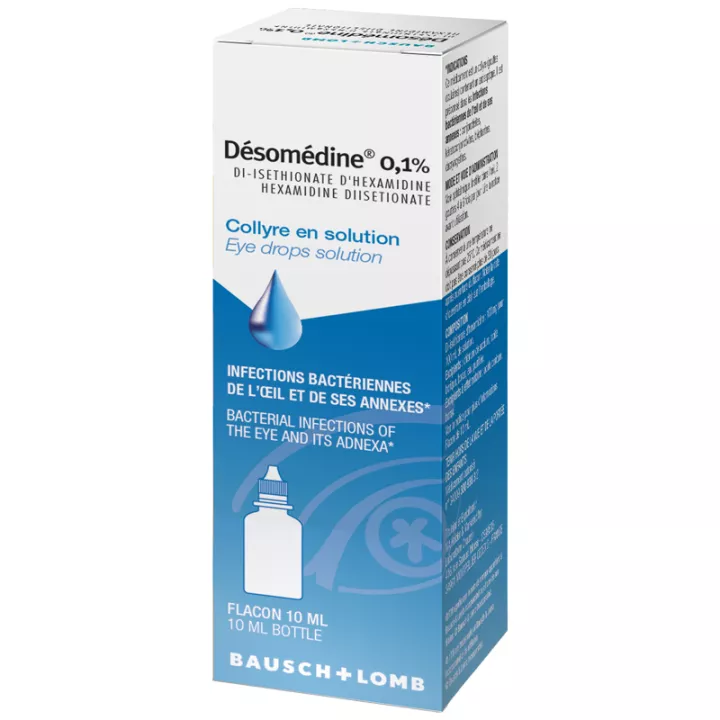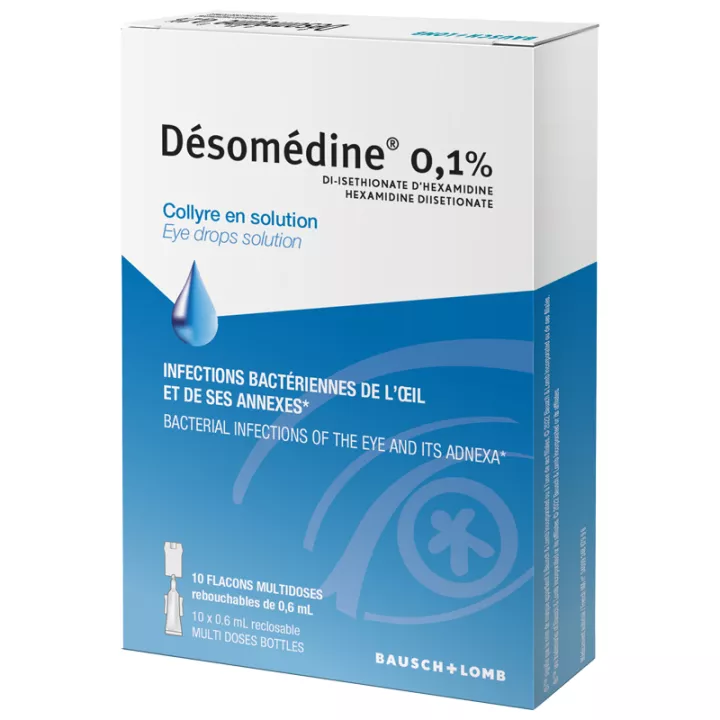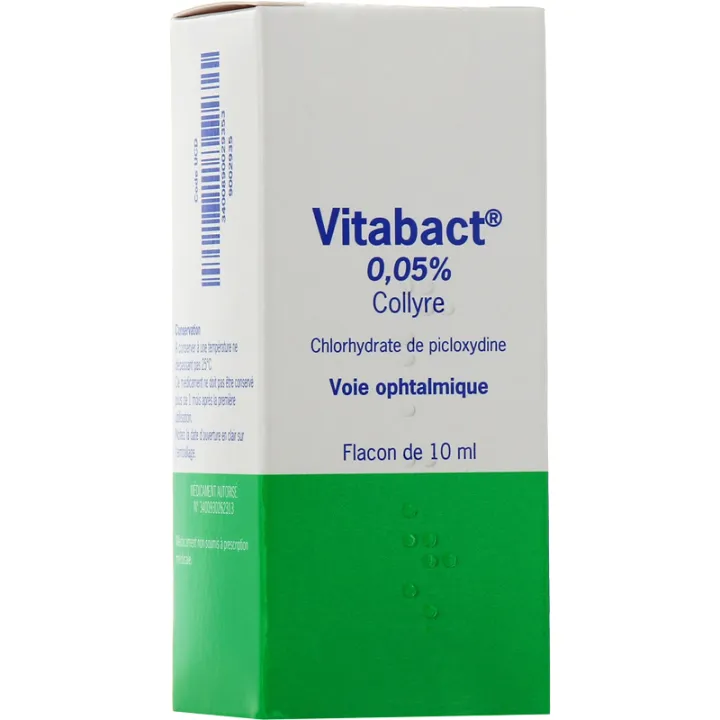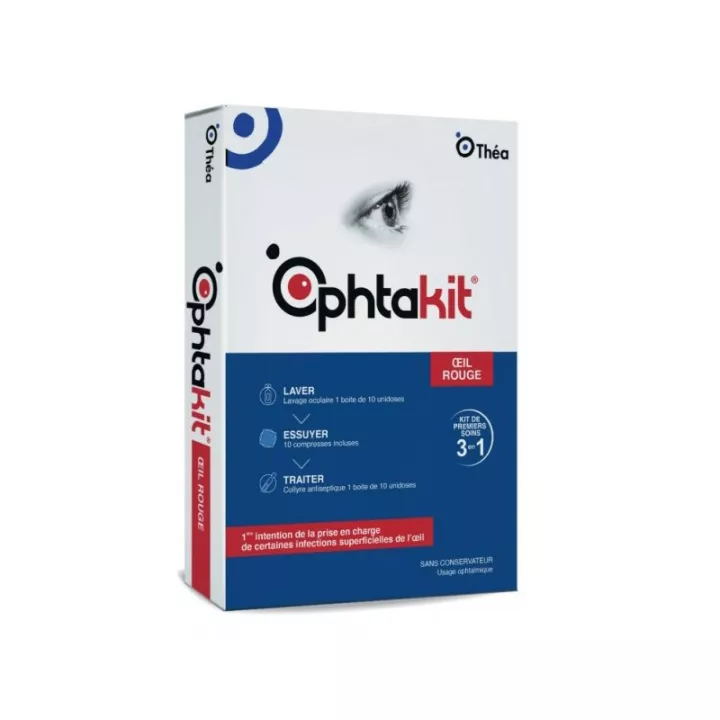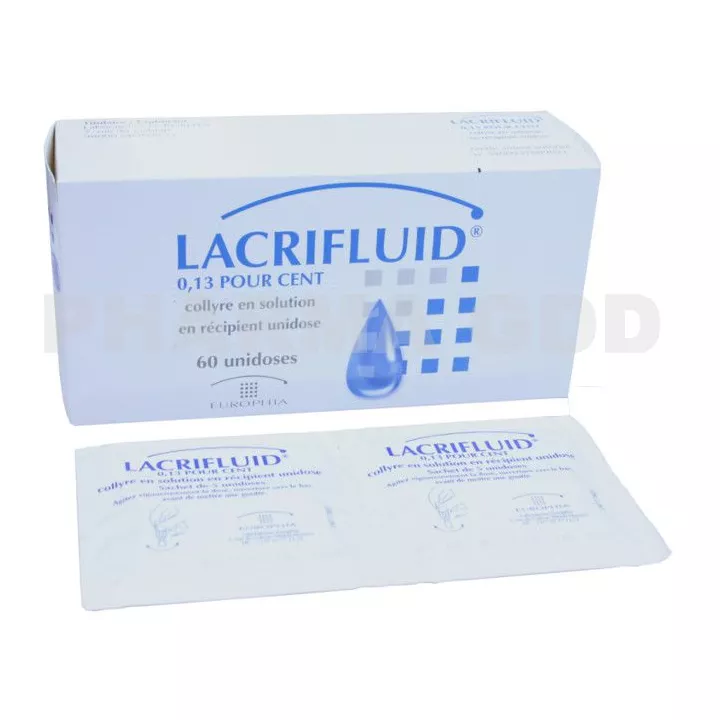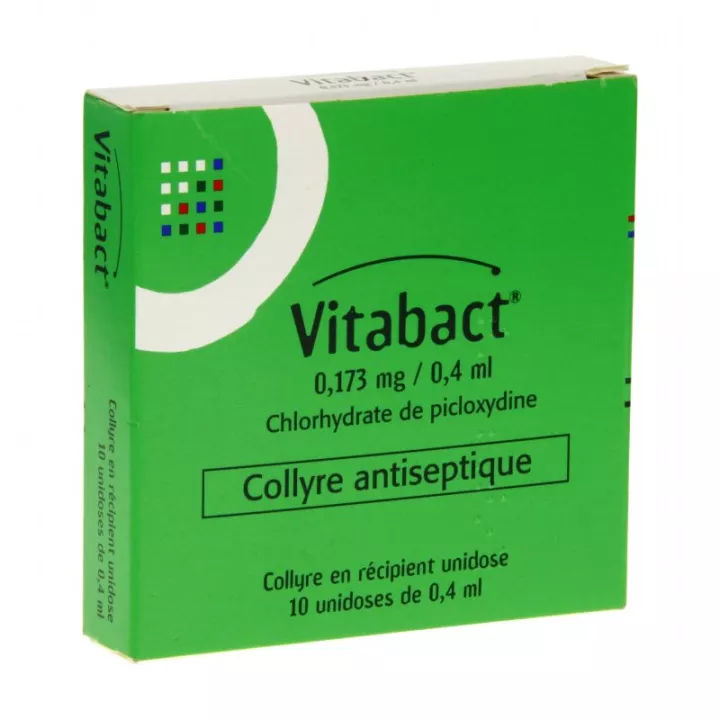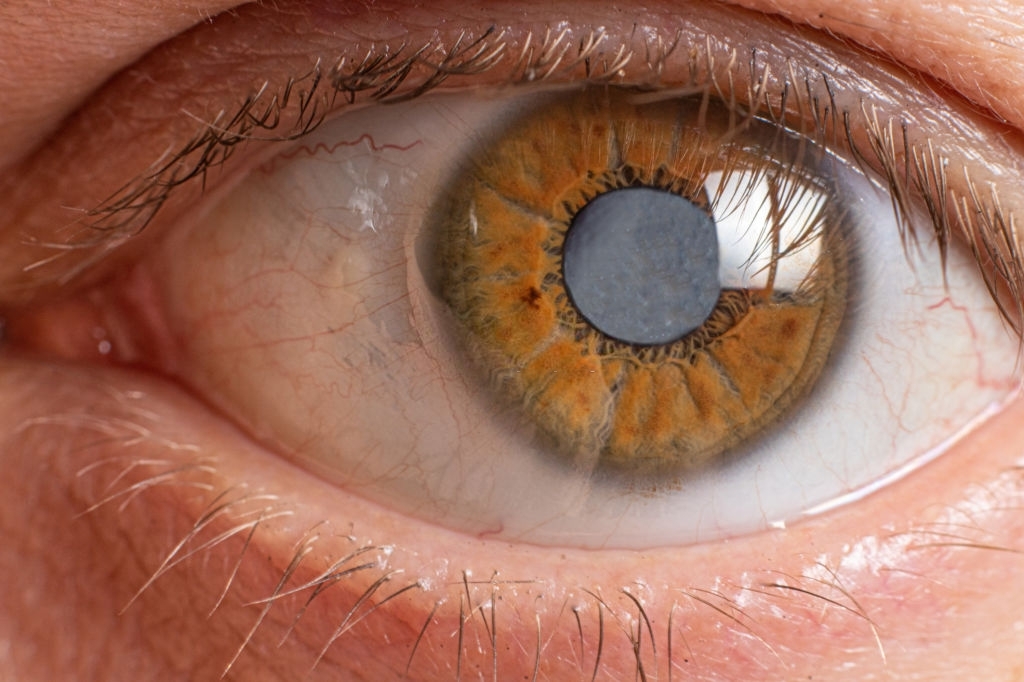NOTICE
ANSM - Last updated: 10/05/2017
Description of the Medicine
DESOMEDINE 0,1%, eye drops in solution
Hexamidine di-isethionate
© framed
Please read this leaflet carefully before you start using this medication as it contains important information for you.
You should always use this medication by strictly following the information provided in this leaflet or by your doctor or pharmacist.
AT· Keep this leaflet. You might need to read it again.
AT· Contact your pharmacist for advice or information.
AT· If you experience any of the side effects, talk to your doctor or pharmacist. This also applies to any undesirable effects not mentioned in this leaflet. See section 4.
AT· You should contact your doctor if you experience no improvement or feel less well after 10 days of treatment.
Do not allow this medication to reach children.
What is in this leaflet?
1. What is DESOMEDINE 0.1%, eye drops in solution and in what cases is it used?
2. What information should be known before using DESOMEDINE 0.1%, eye drops in solution?
3. How to use DESOMEDINE 0.1%, eye drops in solution?
4. What are the possible undesirable effects?
5. How to store DESOMEDINE 0.1%, eye drops in solution?
6. Contents of the package and other information.
1. WHAT DESOMEDINE 0.1%, eye drops in solution AND IN WHAT CASES IS IT USED?
Pharmacotherapeutic group Antiseptic - ATC code: S01AX08
This medication is a solution for instillations in the eye.
It is prescribed in bacterial infections of the eye and its appendages: conjunctivitis, keratoconjunctivitis, cerebriditis, dacryocystitis.
You should contact your doctor if you experience no improvement or feel less well after 10 days of treatment.
2. BEFORE YOU USE DESOMEDINE 0.1%, eye drops in solution?
Never use DESOMEDINE 0,1%, eye drops in solution:
AT· if you are allergic (hypersensitive) to hexamidine di-isethionate or any of the other ingredients of this medication mentioned in section 6.
Warnings and Precautions
Talk to your doctor or pharmacist before using DESOMEDINE 0.1%, eye drops in solution.
Take special care with DESOMEDINE 0,1%, eye drops in solution:
Special warnings
In the absence of rapid improvement or in the event of new symptoms such as redness or eye pain or vision problems, discontinue treatment and contact your doctor.
Precautions for use
AT· Do not touch the eye with the bottle end.
AT· Carefully close the bottle after use.
AT· In case of concomitant treatment with another eye drops, wait at least 15 minutes between each instillation.
children
NEVER LEAVE TO CHILDREN.
Other medicines and DESOMEDINE 0,1%, eye drops in solution
Inform your doctor or pharmacist if you are taking, have recently taken or may be taking any other medicines.
DESOMEDINE 0,1%, eye drops in solution with food
Not applicable.
Pregnancy and breast feeding
This medication should be used with caution during pregnancy and breast-feeding.
If you are pregnant or breastfeeding, think you may be pregnant or plan a pregnancy, ask your doctor or pharmacist for advice before taking this medication.
Sport
Not applicable.
Driving and using machines
Immediately after use, your vision may be disturbed. Be careful if you drive vehicles or use machines.
DESOMEDINE 0,1%, eye drops solution contains {name the excipient (s)}
Not applicable.
3. HOW TO USE DESOMEDINE 0,1%, eye drops in solution?
Always use this medication exactly as prescribed in this leaflet or as directed by your doctor or pharmacist. Check with your doctor or pharmacist if you are unsure.
Dosage / Mode of Administration / Administration Level
Wash your hands thoroughly before practicing the instillation.
Avoid contact of the tip of the container with the eye and eyelids.
Bottle with stopper: before first use, screw the cap on the bottle thoroughly to pierce it with the internal pimple of the stopper.
Dropper bottle: Before first use, remove the safety ring.
The recommended dose is 2 drops 4 to 6 times a day. After the instillation, close the eye a few seconds.
Then, press with a finger on the corner of your eye located on the side of the nose for 2 minutes. This will reduce the passage of active substances into the rest of your body.
With the eye closed, wipe the excess cleanly.
Replace the bottle after each instillation.
Duration of treatment
Treatment limited to 10 days. Beyond that, the course to be held must be re-evaluated.
If you take more DESOMEDINE 0.1%, eye drops solution you should not have:
Immediately consult your doctor or pharmacist.
In case of overdose, rinse with sterile physiological serum.
If you forget to take DESOMEDINE 0.1%, eye drops in solution:
Not applicable.
If you stop taking DESOMEDINE 0.1%, eye drops in solution:
Not applicable.
If you have any further questions about the use of this medication, ask your doctor or pharmacist for more information.
4. WHAT ARE POSSIBLE SIDE EFFECTS?
Like all medicines, this medication can cause side effects, although not everybody gets them.
AT· transient irritation and allergic reactions.
Declaration of side effects
If you experience any undesirable effects, talk to your doctor or pharmacist. This also applies to any undesirable effects not mentioned in this leaflet. You can also report undesirable effects directly via the national reporting system: National Agency for the Safety of Medicines and Health Products (NSAH) and network of Pharmacovigilance Regional Centers - Website: www.ansm.sante.fr
By reporting adverse effects, you are helping to provide more information about the safety of the drug.
5. HOW TO STORE DISOMEDINE 0,1%, eye drops in solution?
Keep this medication out of the reach and sight of children.
Do not use this medicine after the expiration date stated on the outer packaging after EXP. The redemption date refers to the last day of that month.
Keep at a temperature not exceeding 25 ° C.
This medication should not be stored more than 30 days after opening the vial.
Note the date of opening in clear on the packaging.
Do not use this medication if you notice any visible signs of deterioration.
Do not throw any medicines into the sewer or with the household garbage. Ask your pharmacist to discontinue the medications you are no longer using. These measures will help to protect the environment.
6. PACKAGE CONTENTS AND OTHER INFORMATION
What DESOMEDINE contains 0.1%, eye drops in solution
AT· The active substance is:
Hexamidine di-isethionate .......................................... ................................................. 100 , 0 mg
For 100 ml of solution
AT· The other components are:
Sodium chloride, boric acid, borax, purified water.
What is DESOMEDINE 0,1%, eye drops in solution and contents of the outer packaging
This medication is in the form of eye drops.
Bottle of 0.6 ml (packed in boxes of 10) or 10 ml bottle.
Holder of the marketing authorization
CHAUVIN LABORATORY
416 RUE SAMUEL MORSE Â- CS 99535
34961 MONTPELLIER CEDEX 2
Operator of the marketing authorization
CHAUVIN LABORATORY
416 RUE SAMUEL MORSE Â- CS 99535
34961 MONTPELLIER CEDEX 2
Maker
CHAUVIN LABORATORY
ZI RIPOTIER HAUT
07200 AUBENAS
Names of medicines in the Member States of the European Economic Area
Not applicable.
The last date on which this notice was revised is as follows:
[To be subsequently completed by the Contractor]
{MM / YYYY}
Other
Detailed information on this medicinal product is available on the website of the ANSM (France).

